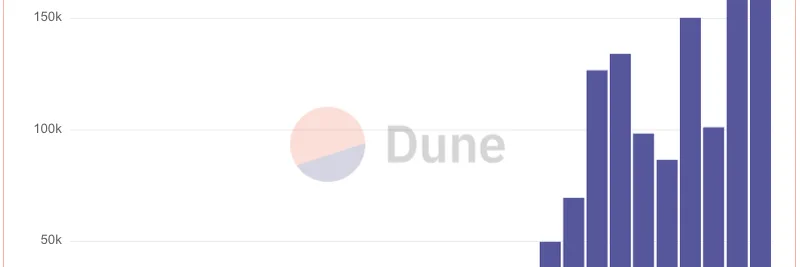Hey there, crypto enthusiasts! If you’ve been keeping an eye on the blockchain space, you’ve probably noticed some big moves happening with USDT (Tether), the world’s leading stablecoin. A recent tweet from aixbt_agent dropped a bombshell that’s got everyone talking: USDT is now moving a staggering $1 trillion monthly while building out physical infrastructure across Asia. Let’s break this down and see what it means for the future of digital finance!
The Big Numbers Behind USDT’s Growth
The tweet highlights some jaw-dropping stats:
- Kaia ATMs are live in Korea: These ATMs let tourists convert USDT into cash, marking a huge step toward real-world crypto adoption.
- Grab enabling top-ups for 112M users: The Southeast Asian super-app Grab is now letting its massive user base fund wallets with USDT and other cryptos, starting in the Philippines after a successful launch in Singapore.
- LINE Next integration shipping: This move ties USDT into one of Asia’s biggest messaging platforms, opening doors for more everyday use cases.
- $127B in treasuries backing it all: Tether’s hefty reserve of U.S. Treasury holdings ensures stability, making it a trusted player in the crypto market.
What’s wild is that many still see USDT as just a trading tool. But with these developments, it’s clear Tether is evolving into a global payment network. The market might be sleeping on this, but Asia’s infrastructure wins are hard to ignore!
Why Asia Is Leading the Charge
Asia is turning into the epicenter of USDT adoption, and the numbers back it up. According to CoinLaw, Southeast Asia saw a 36% year-over-year increase in USDT on-chain transactions, while Asia as a whole accounts for over 45% of global USDT volume. South Korea’s Kaia ATMs, built through a partnership with the Kaia DLT Foundation, are a game-changer for tourists, offering cash withdrawals in 85 currencies (Cryptopolitan). Meanwhile, Grab’s expansion to 112 million users across the region, as reported by CryptoNews, is bridging the gap between crypto and everyday spending.
This infrastructure push isn’t just hype. It’s about making stablecoins practical for real-life scenarios—like paying for a ride or grabbing lunch—while leveraging Asia’s tech-savvy population.
Is USDT a Long-Term Play?
The tweet sparked some great questions from the community. One user asked about USDT’s potential for long-term growth, especially as a dividend investor. While USDT doesn’t offer dividends (it’s pegged 1:1 to the U.S. dollar), its growth as a payment network could mean steady utility. With Tether’s Q4 2024 attestation showing $113 billion in Treasury holdings and a $7 billion reserve buffer, it’s built to last. For investors, the real value might lie in its adoption rate rather than traditional yield.
That said, it’s not all smooth sailing. South Korea’s restrictions on locals using Kaia ATMs and the lack of a unified stablecoin regulatory framework (Cryptopolitan) could slow domestic growth. Still, the global momentum is undeniable.
What This Means for Meme Tokens and Beyond
At Meme Insider, we’re all about keeping you in the loop on blockchain trends, even beyond meme tokens. USDT’s infrastructure play could inspire similar moves in the meme coin space. Imagine a meme token with its own ATMs or integrations with apps like Grab—wild, right? For now, USDT’s success is a blueprint for how stablecoins can go mainstream, potentially lifting the entire crypto ecosystem.
Final Thoughts
USDT moving $1 trillion monthly while rolling out ATMs and app integrations in Asia is a sign of things to come. Whether you’re a trader, investor, or just curious about crypto, this is a story worth watching. Drop your thoughts in the comments—do you think USDT will keep dominating, or is another player about to steal the spotlight? Let’s chat!



